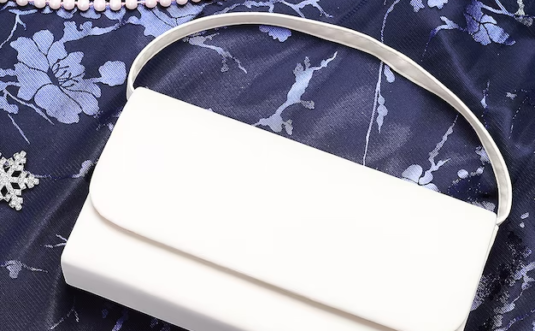The Bauhaus School of Design, founded in 1919 by architect Walter Gropius in Weimar, Germany, emerged as a revolutionary force in the world of art, design, and architecture. Combining craftsmanship with industrial techniques, the Bauhaus movement sought to break free from traditional artistic conventions and create a new aesthetic language that would shape the future of design.
What is Fashion Design?
Fashion design is a captivating realm where artistry and functionality intertwine to shape the world of clothing and accessories. It encompasses the innovative process of conceptualizing, creating, and bringing garments to life, capturing the essence of individuality and personal expression.
Italy, England, France, the United States, and Japan have long been hailed as historic pioneers in the realm of fashion design, leaving an indelible mark on the industry. These countries have continuously pushed boundaries and introduced fresh perspectives, contributing to the vibrant tapestry of global fashion.
Fashion design flourishes in the realm of collaboration, as the creative vision of designers merges seamlessly with the expertise of skilled artisans. This harmonious synergy propels the production process forward, resulting in finely crafted pieces that celebrate both form and function.
Driven by an unwavering commitment to innovation, the fashion design sector embraces cutting-edge technologies and embraces novel materials and techniques. It’s a dynamic field that thrives on exploration, experimentation, and staying ahead of the curve. Through industry and research, designers navigate uncharted territories, weaving together tradition and modernity to redefine the limits of creativity.
Fashion, beyond its utilitarian purpose, is a cultural phenomenon that reflects the ever-evolving collective behavior and societal dynamics. It possesses the remarkable ability to transcend mere clothing, symbolizing individual identity, social status, and personal aspirations. Fashion design captures the essence of this fluidity, shaping trends and redefining norms.
Within the realm of fashion design, designers are the architects of style, channeling their artistic prowess and honing their craft to create garments that resonate with the zeitgeist. They possess a keen understanding of the pulse of society, anticipating trends, and translating them into wearable works of art. Their creative visions influence the trajectory of the fashion industry, inspiring and captivating audiences worldwide.

Fashion designers embark on a fascinating journey, meticulously selecting materials, patterns, silhouettes, and hues to breathe life into their creations. They weave narratives through their designs, narrating stories that evoke emotions and provoke thought. From opulent couture pieces to ready-to-wear ensembles, each garment carries its unique tale, designed to empower and inspire the wearer.
These elements encompass the various stages and considerations involved in the creative process of fashion design:
- Inspiration;
- Sketching and Illustration;
- Fabric Selection;
- Patternmaking;
- Garment Construction;
- Embellishments and Finishing Touches;
- Fittings and Alterations;
- Presentation and Styling;
- Trend Forecasting;
- Marketing and Branding.
While haute couture remains the epitome of bespoke luxury, the majority of fashion design caters to the broader market. Ready-to-wear collections showcase the fusion of aesthetics and practicality, as designers strive to make fashion accessible to a wider audience. Balancing comfort, style, and affordability, they craft versatile pieces that seamlessly blend into the rhythm of everyday life.
Fashion design is a captivating realm where creativity knows no bounds. It is an ever-evolving tapestry, where designers orchestrate harmonious symphonies of fabric, color, and texture. With every stitch and every brushstroke, they shape the sartorial landscape and leave an indelible mark on the world of fashion. Through their boundless imagination, fashion designers transform mere clothing into a vibrant celebration of self-expression and individuality.
The Principles of the Bauhaus Movement
At its core, the Bauhaus School emphasized the integration of art, craft, and technology. It aimed to bridge the gap between artistic disciplines and create a collaborative environment that encouraged experimentation and innovation. The key principles of the Bauhaus movement included:
- Form Follows Function: The Bauhaus rejected decorative and ornamental excess in favor of functional design. Objects were stripped down to their essential elements, with the belief that design should serve a purpose and be in harmony with its intended function;
- Embracing Modern Materials: The use of modern materials, such as steel, glass, and concrete, was a hallmark of Bauhaus design. These materials were celebrated for their industrial aesthetic and were incorporated into furniture, architecture, and everyday objects;
- The Unity of Art and Technology: The Bauhaus sought to unite art and technology, emphasizing the importance of craftsmanship and the integration of industrial processes into artistic production. Students at the Bauhaus School were encouraged to explore various mediums and techniques, from woodworking and metalworking to weaving and ceramics;
- Experimental Education: The Bauhaus curriculum was designed to provide students with a well-rounded education in both theory and practice. The school offered workshops led by renowned artists and craftsmen, where students could learn and collaborate across disciplines. This interdisciplinary approach fostered a spirit of experimentation and cross-pollination of ideas;
- Total Work of Art: The concept of the “Gesamtkunstwerk,” or total work of art, was central to the Bauhaus philosophy. It aimed to create a harmonious synthesis of all artistic elements, integrating architecture, design, and visual arts into a unified whole.
The Bauhaus Legacy and Influence
Despite its closure in 1933 due to political pressures, the Bauhaus School’s impact on modern art and design remains profound. Many of its principles and practices continue to shape contemporary design education and industry. The Bauhaus approach to design has influenced various disciplines, including architecture, furniture design, typography, and graphic design.
Notable figures associated with the Bauhaus School, such as Walter Gropius, Ludwig Mies van der Rohe, and Wassily Kandinsky, went on to become influential figures in the art and design world. The Bauhaus aesthetic, characterized by simplicity, clean lines, and functionalism, still resonates today and is often seen as a precursor to modernism and minimalism.
The Bauhaus School’s legacy extends beyond its physical existence, as its ideas and principles have been disseminated worldwide. Design schools and movements around the globe continue to draw inspiration from the Bauhaus, paying homage to its innovative spirit and pioneering vision.
Conclusion
In conclusion, the Bauhaus School of Design revolutionized modern art and design through its emphasis on functionalism, integration of art and technology, and experimental approach to education. Its legacy continues to shape the way we perceive and create design, serving as a testament to the enduring influence of this groundbreaking movement.




